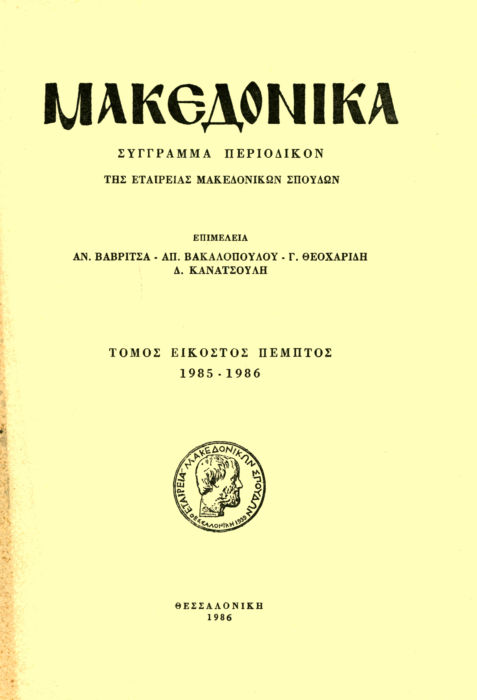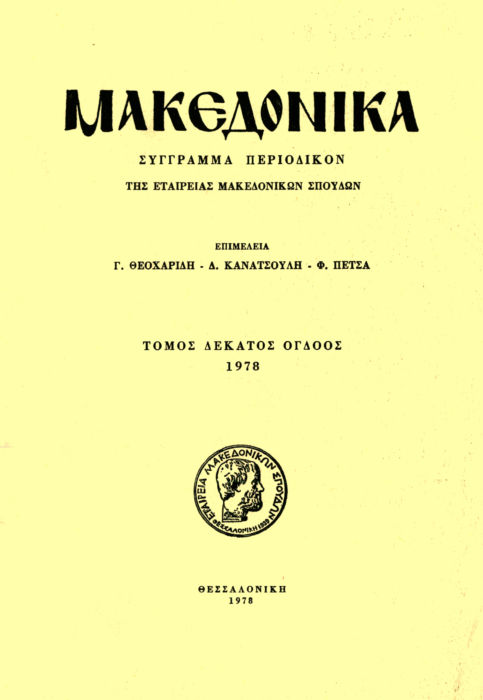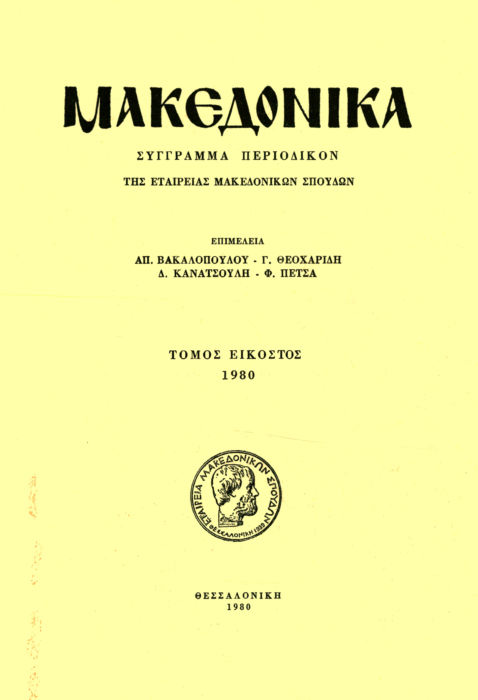The Romans and Chalkidiki
Abstract
We are here publishing the text of a communication made at the «1st Panhellenic Symposium for Histoiy and Archaeology of Chalkidiki (Chalkidiki 7-9 December 1984)». In this text we examine first the relations of the Romans to Chalkidiki and second certain aspects of the Roman policy there.
As tc the first question, we mainly examine the activities of the Roman
fleet at the coasts of Chalkidiki during the two last Macedonian wars (200
and 169 B.C.): the capture and plunder of Acanthos, the pillage of the territory of Aeneia and Antigoneia, the devastation of the Pailene peninsula and finally the siege of the Cassandreia town (Potidea). Furthermore we examine the manifold interest shown by the Romansfor Chalkidiki, both by the Roman merchants and the central Roman govern
ment. In the first case the result was the foundation of a «conventuscivium Romanorum» at Acanthos (today’s Ierissos). We learn of the installation of the Romans (negotiatores) at Acanthos from a Greek inscription engraved at the colossal base of a statue (probably of Augustus) dated between 27 B.C. and 14 A.D. It was a votive statue errected by the town of Acanthos and the «conventus civium Romanorum».
A large part of the study is dedicated to the research of various problems
related to the history of the «conventus» of Acanthos and mainly the reasons for its foundation, the topography of the territory of Acanthos etc. Thus based principally on archaeological evidence, we come to the conclusion that the main reasons for the installation of the Roman merchants in Acanthos, were the following: 1) the existence of rich mines in the area of the town; 2 its rich forests and consequently the wood for construction; 3) the existence of Thracian population in its «hinterland» —a principal source for the sla ves’ commerce.
As to the history of the «conventus» we have not yet enough informa
tion; it seems that it was founded between the years 85 and 57 B.C. and flourished during the imperial period. Finally, we try to establish the frontiers of the Acanthos’ teriitory and locate the villages that were administratively dependent on this town.
Further in the text we deal with the Roman colony of Cassandreia, founded in the official Roman political frame in Chalkidiki. We examine briefly (due to the fact, that a study dedicated to this Roman colony, is ready to be published by the author) various problems concerning the foundation of the colony, the compound of its population, the.institutions and frontiers of its territory.
Article Details
- How to Cite
-
Σαμσάρης Δ. Κ. (1986). The Romans and Chalkidiki. Makedonika, 25(1), 33–46. https://doi.org/10.12681/makedonika.218
- Issue
- Vol. 25
- Section
- Articles

This work is licensed under a Creative Commons Attribution-NonCommercial-ShareAlike 4.0 International License.
Authors who publish with this journal agree to the following terms:
- Authors retain copyright and grant the journal right of first publication with the work simultaneously licensed under a Creative Commons Attribution Non-Commercial License that allows others to share the work with an acknowledgement of the work's authorship and initial publication in this journal.
- Authors are able to enter into separate, additional contractual arrangements for the non-exclusive distribution of the journal's published version of the work (e.g. post it to an institutional repository or publish it in a book), with an acknowledgement of its initial publication in this journal.
- Authors are permitted and encouraged to post their work online (preferably in institutional repositories or on their website) prior to and during the submission process, as it can lead to productive exchanges, as well as earlier and greater citation of published work (See The Effect of Open Access).








